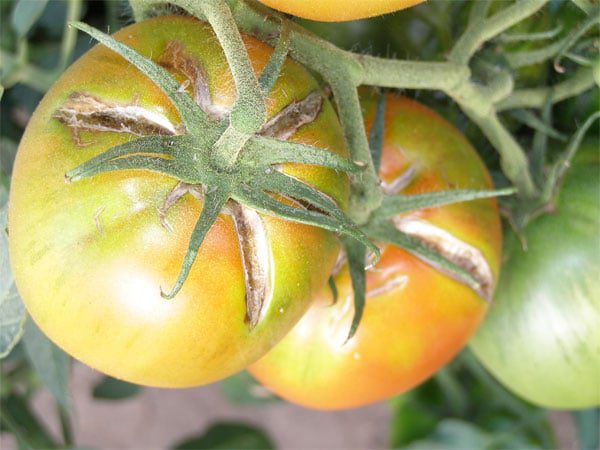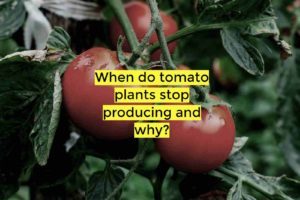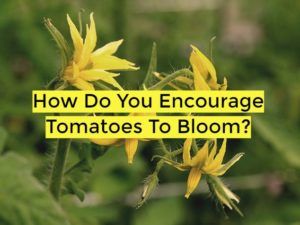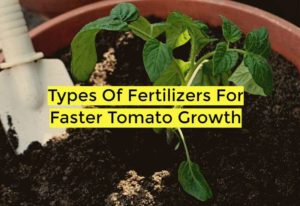Tomato fruit cracking falls among the top fruit defacing diseases around. Right there with catfacing in tomato! No one likes deformed fruits. Growing crack-free tomatoes is the unspoken goal. I mean they are still edible and delicious. But you can’t sell them or put them in a gift basket for dear sally your next-door neighbor.
You can prevent and grow crack-free tomatoes by regular irrigation, overhead irrigation during hot weather, mulching to improve moisture conservation in the soil, picking tomatoes early, and adding calcium to the soil. Moisture and calcium are the biggest factors that lead to cracking in tomatoes. Fruit cracking in tomatoes is not caused by microorganisms.
Types of cracking in tomatoes

Radial cracking in tomatoes begins at the stem end and spreads longitudinally down the fruit. Fruit with deep radial fissures is unmarketable and more susceptible to decay. The split in cherry tomatoes can extend the entire length of the fruit.

Concentric cracking in tomatoes begins when concentric cracks circle the tomato around the fruit’s shoulder. Breaking of the fruit tissue surrounding the stem scar is the most common symptom. Symptoms are most common when tomatoes are nearing maturity, but immature green tomato fruit can still be affected.
How to grow tomatoes free of cracking
Irrigating regularly
You should always stick to a routine when it comes to irrigating your tomato plants. This means you have to keep a strict irrigating interval let’s say every 3 days for instance and maintain a constant depth of water only increasing it as the crop matures or when the weather gets too hot and evaporation is high.

If you always let the soil get too dry and then flood the soil at one go, that sudden change in water uptake will cause the fruit to crack. This will happen because the inside of your tomato’s fruit is expanded faster than the skin.
During high temperatures, your soil will dry up quicker than at other times. You should adjust your irrigation practice during such times to ensure all the crops get adequate water. The last thing you want for your tomatoes is to get continuously exposed to these moisture extremes that will lead to fruit splitting.
Read more: How often should you water tomato plants.
Overhead irrigation to prevent cracks
Another tip to reduce fruit cracking in tomatoes is to use overhead irrigation. Here, water is sprayed on the plants and fruits. The result is a cooling effect. During hot weather, fruits can use some help cooling. It increases the odds of having crack-free tomatoes.
Mulching for crack-free tomatoes

When you mulch, you cover the soil around the plant and reduce the rate of evaporation. When evaporation is low, the moisture in the soil will be available to the plants for longer. Your tomatoes will not undergo the stress of the soil becoming too dry over a short period of time and reduce the risk of fruit splitting.
Monitor the nutrients and calcium in the fertilizer
Fruit cracking in tomatoes due to deficiency of calcium. Calcium is good for fruit development. It helps the fruit develop tough skin which reduces cracking and splitting. Also, avoiding fertilizers with high levels of phosphorus. Especially when the soil has phosphorus in abundance.
You can test the soil to determine soil phosphoric concentrations. Too much phosphorus is bad. As are most of the plant nutrients when used in excess. But too much phosphorus will cause the tomato fruits to become big too fast and split.
Picking tomatoes early
Letting your tomatoes ripen all the way while still on the plant may increase the chances of the fruit splitting. It is better if you pick them early before they turn ripe to avoid such a risk. Ripe tomatoes are red. The color change begins from yellow to slightly pink and then red. You want to pick them around the slightly pink stage when they are close to ripening. Your tomatoes will continue to ripen even after they are taken away from the vine.
Enemies of growing crack-free tomatoes
There are various factors known to contribute to fruit cracking such as high humidity, irregular watering, and calcium levels temperature, and water uptake.
Irrigation practices are at the backbone of how all these factors end up causing fruit splitting. Fruit splitting has also been attributed to the genetics in some tomatoes as well as standing water on the fruit.
Fruit cracking or splitting can present itself as a small split to gulley-sized (pun-intended) skin cracks running down the side of your fruit. It is important to investigate your cultural practices because water management, available light, and the rate of fruit development rely heavily on your management practices which make up that culture.
For greenhouse owners, increased lighting which leads to increased fruit growth may occur when you change the greenhouse plastic and when you top-dress to increase fruit size. Therefore, when you streamline the following factors in your tomato management practice, you will find yourself growing crack-free tomatoes all year.
What can you do with the split tomatoes?
Once your tomatoes are cracked or split, it will be hard to sell them because you get a lot of competition from other blemish-free tomatoes at the market. However, you can offer them at a discount on the market.
You can also use them with salads and for cooking at home because they are still fresh. You can also use them to make tomato jams, sauces, and ketchup which you can sell for an even higher price to your customers.
Another idea is to sell them to livestock farmers such as pigs and chickens who love eating tomatoes or feed them to their own livestock at home.




